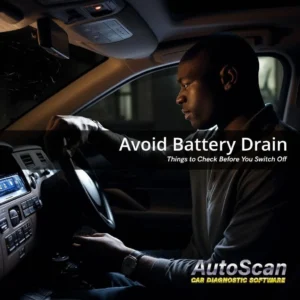🌅 Rust Prevention: Protecting Your Car’s Undercarriage 🚗🛡️
Introduction: The Silent Threat Beneath
The undercarriage of your car, often out of sight, is frequently exposed to road salts, moisture, and debris that can accelerate the rusting process. Rust, an iron’s reaction with water and oxygen, is a silent assailant that can compromise the integrity and longevity of your vehicle. However, with the right preventive measures, you can effectively guard against this menace.
1. Regularly Wash the Underside of Your Car 🚿
Road residues, especially salt during winter, can hasten the rusting process. Regular washing not only maintains your car’s aesthetics but also gets rid of these harmful agents, significantly reducing rust’s chances of formation.
2. Anti-Rust Spray and Undercoating: Double Defense 🛡️
Consider reinforcing your car’s natural defenses by applying an anti-rust spray or undercoating. These protective layers can be your vehicle’s shield against water and rust-causing elements, ensuring prolonged protection.
3. Maintain the Paintwork 🎨
Your vehicle’s paint serves as a first line of defense against moisture. Any breaches in this protective layer, like chips or cracks, provide an avenue for moisture to reach the metal beneath. Addressing these issues promptly can stave off potential rusting problems.
4. Smart Parking After Wet Drives 🌬️
Moisture can be a catalyst for rust. After driving in wet conditions, it’s wise to park in a dry, ventilated spot. This allows accumulated water to evaporate, reducing rusting potential.
5. Regular Inspection and Immediate Action 🔍
Staying ahead of rust requires regular undercarriage checks, especially after exposure to elements that promote rusting. Early detection and immediate treatment can save significant repair costs down the line.
Conclusion
By proactively caring for your car’s undercarriage, you’re not just preserving its aesthetics but also ensuring its longevity and optimal performance. A few preventive measures can thwart the corrosive effects of rust, keeping your vehicle in prime condition for years to come.
FAQs:
- How often should I check my car’s undercarriage for rust?
It’s advisable to conduct regular inspections, especially after exposure to salt or driving through waterlogged areas. At least a bi-annual check is recommended. - Does rust affect the vehicle’s performance?
Yes, extensive rusting can compromise the structural integrity and safety of the vehicle, and can also affect various components leading to reduced performance. - Are there any specific anti-rust products you recommend?
There are several reputable brands in the market. It’s best to consult with an auto-care professional or mechanic for recommendations suitable for your vehicle and environment. - Can rust spread from one part of the vehicle to another?
While rust itself doesn’t ‘spread’ like a disease, the conditions that caused rust in one area (like moisture and salt) can affect other areas of the vehicle. - Is it expensive to treat or repair rust?
The cost can vary based on the extent of the damage and the specific treatments or repairs required. Early detection and treatment are usually more cost-effective than addressing extensive rust damage.





